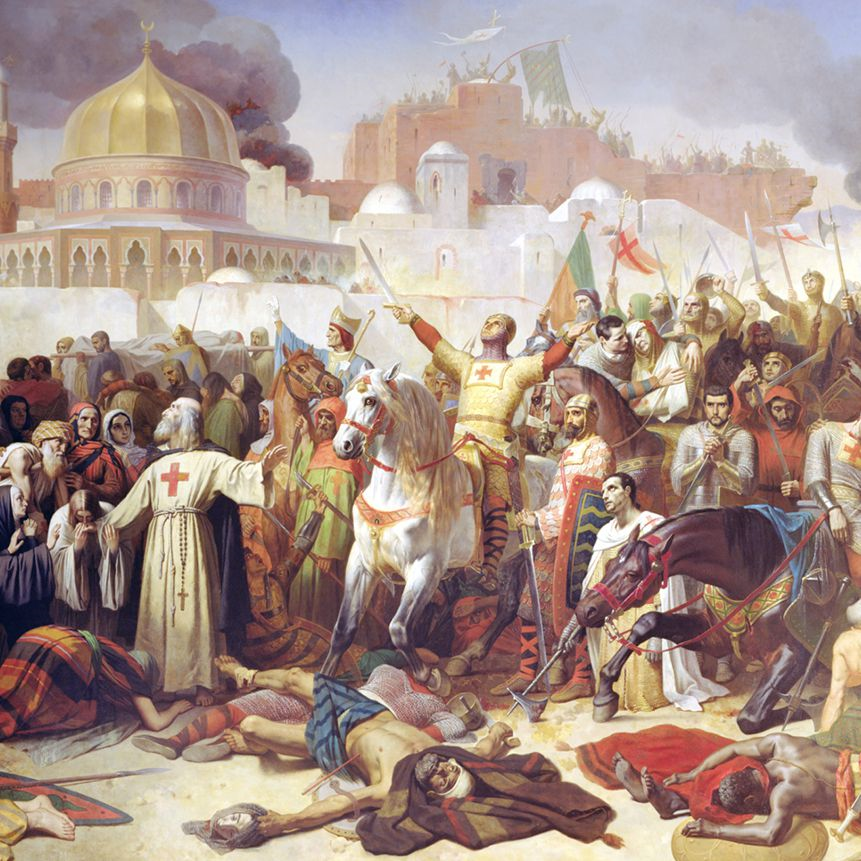mNo edit summary Tag: Visual edit |
Tag: Visual edit |
||
| Line 12: | Line 12: | ||
=== Early Development === | === Early Development === | ||
The early history of christianity is unclear, with reliable facts few and myths many. Being as how christianity itself likely began with the life of [[Jesus]], of which, the earliest historical account of his life was made at around 70 CE - decades after his legendary dealth - it is unclear how and when christianity first appered as a religion.<ref>{{Citation|author=Karen Armstrong|year=1993|title=A History of God|title-url=https://books.google.com/books/about/A_History_of_God.html?id=_n3cCF2I2FUC|chapter=3|page=79|publisher=Alfred A. Knopf|isbn=9780345384560|trans-lang=English}}</ref> | |||
==== Divergence from Judaism ==== | |||
By the middle of the first century CE, there had emerged a particular group a Jews whom had begun to adapt heterodox views compared to normal followers of Judaism. This nascent Jewish sect is known by modern scholars as "Jewish-Christians", or "Jewish followers of Jesus". The Jewish-Christians had applied the theological view of a "savior" or "messiah" to Jesus. | |||
While the first followers of Jesus were located almost entirely in [[Roman Empire (27 BCE–395 CE)|Roman]] Judea (modern-day [[State of Israel|Isreal]]), by means of missionaries, this early form of christianity was able to spread across the Roman Empire. These first theological missions were originally targeting the Jewish communites outside Judea, but over time, gentiles (non-Jews) became early Christians as well. Overtime, the theological difference between Jewish-Christians and Jews got to a point where those Jewish-Christians became ''Christians'', particularly after more-and-more non-Jews became members of this sect.<ref>{{Citation|author=Ivor J. Davidson|year=2004|title=The Birth of the Church: From Jesus to Constantine, A.D. 30-312|title-url=https://books.google.com/books/about/The_Birth_of_the_Church.html?id=sucPAQAAIAAJ|publisher=Baker Books|isbn=9780801012709|trans-lang=English}}</ref> | |||
== References == | == References == | ||
<references /> | <references /> | ||
Revision as of 00:45, 18 June 2022

Christianity is an abrahamic and monotheistic religion thats dogma is based around the writings contained within the bible, a set of myths imperfectly edited and translated for centuries. Christianity is currently the most largest religion on Earth, it having about 2.6 billion adherents as of 2020.[1]
In spite of many christians claiming that they have the "one and true" faith, there exists over 45,000 sects of christianity on Earth, of which, the roman catholic church is the largest in terms of membership, followed by the protestantism (which itself is extremely fragmented), then eastern orthodoxy.[2]
Christianity (along with most religions in general) has been used by the ruling class during various stages of economic and historical development, mostly as a tool of justifying the social and economic order relative to that historical epoch, which would further secure the power and wealth of said ruling class. Things such as a "divine mandate" or a "god-given misson" and things of that nature have been used, be it in past or present eras, to legitimize slavery[3][4], feudalism[5], fascism[6], genocide[7], and capitalism.[8]
Christianity, along with other organized and dogmatic religions, has always been, to some extent, a regressive force in regards to the development of civilization.
History
Early Development
The early history of christianity is unclear, with reliable facts few and myths many. Being as how christianity itself likely began with the life of Jesus, of which, the earliest historical account of his life was made at around 70 CE - decades after his legendary dealth - it is unclear how and when christianity first appered as a religion.[9]
Divergence from Judaism
By the middle of the first century CE, there had emerged a particular group a Jews whom had begun to adapt heterodox views compared to normal followers of Judaism. This nascent Jewish sect is known by modern scholars as "Jewish-Christians", or "Jewish followers of Jesus". The Jewish-Christians had applied the theological view of a "savior" or "messiah" to Jesus.
While the first followers of Jesus were located almost entirely in Roman Judea (modern-day Isreal), by means of missionaries, this early form of christianity was able to spread across the Roman Empire. These first theological missions were originally targeting the Jewish communites outside Judea, but over time, gentiles (non-Jews) became early Christians as well. Overtime, the theological difference between Jewish-Christians and Jews got to a point where those Jewish-Christians became Christians, particularly after more-and-more non-Jews became members of this sect.[10]
References
- ↑ "World Population" (2020). countrymeters.info.
- ↑ Donavyn Coffey (2021-2-27). "Why does Christianity have so many denominations?" Live Science.
- ↑ Edward J. Cashin (2001). Beloved Bethesda : A History of George Whitefield's Home for Boys. Mercer University Press. ISBN 9780865547223
- ↑ Juan Siliezar (2019-1-7). "Slavery alongside Christianity" Harvard Gazette. Retrieved 2022-6-16.
- ↑ Gerd Althoff (2007). Christian Values and Noble Ideas of Rank and their Consequences on Symbolic Acts.
- ↑ Roger Eatwell (2003). Reflections on Fascism and Religion.
- ↑ Willliam E. Weeks (1996). Building the Continental Empire: American Expansion from the Revolution to the Civil War (p. 61).
- ↑ Kate Bowler (2013). Blessed: A History of the American Prosperity Gospel. ISBN 9780199827695
- ↑ Karen Armstrong (1993). A History of God: '3' (p. 79). Alfred A. Knopf. ISBN 9780345384560
- ↑ Ivor J. Davidson (2004). The Birth of the Church: From Jesus to Constantine, A.D. 30-312. Baker Books. ISBN 9780801012709